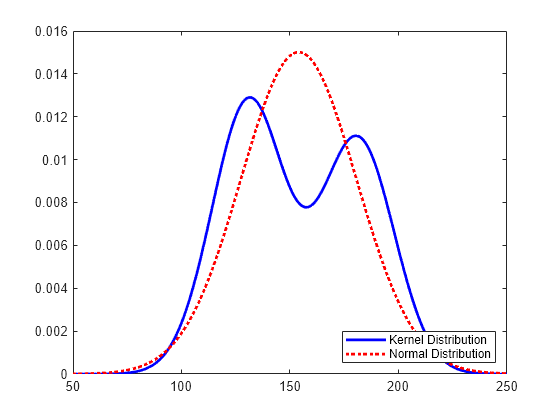KernelDistribution
核概率分布对象
说明
一个 KernelDistribution 对象由非参数化核平滑分布的参数、模型描述和样本数据组成。
核分布是一个随机变量的概率密度函数 (pdf) 的非参数化估计。
核分布使用以下选项。
| 选项 | 描述 | 可能的值 |
|---|---|---|
Kernel | 核函数类型 | normal, box, triangle, epanechnikov |
Bandwidth | 核平滑参数 | Bandwidth > 0 |
属性
对象函数
cdf | 累积分布函数 |
gather | Gather properties of Statistics and Machine Learning Toolbox object from GPU |
icdf | 逆累积分布函数 |
iqr | Interquartile range of probability distribution |
mean | 概率分布的均值 |
median | Median of probability distribution |
negloglik | Negative loglikelihood of probability distribution |
pdf | 概率密度函数 |
plot | Plot probability distribution object |
random | 随机数 |
std | 概率分布的标准差 |
truncate | Truncate probability distribution object |
var | 概率分布的方差 |
示例
扩展功能
版本历史记录
在 R2013a 中推出

